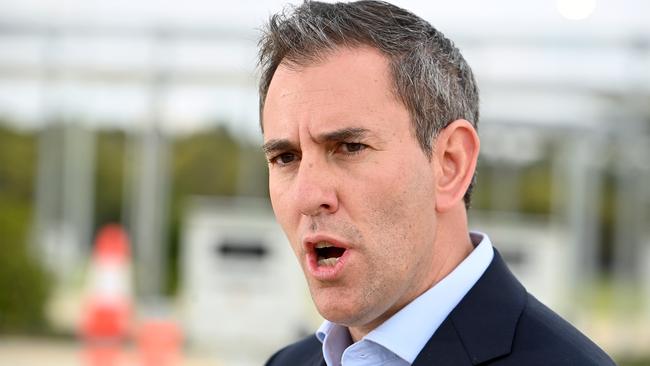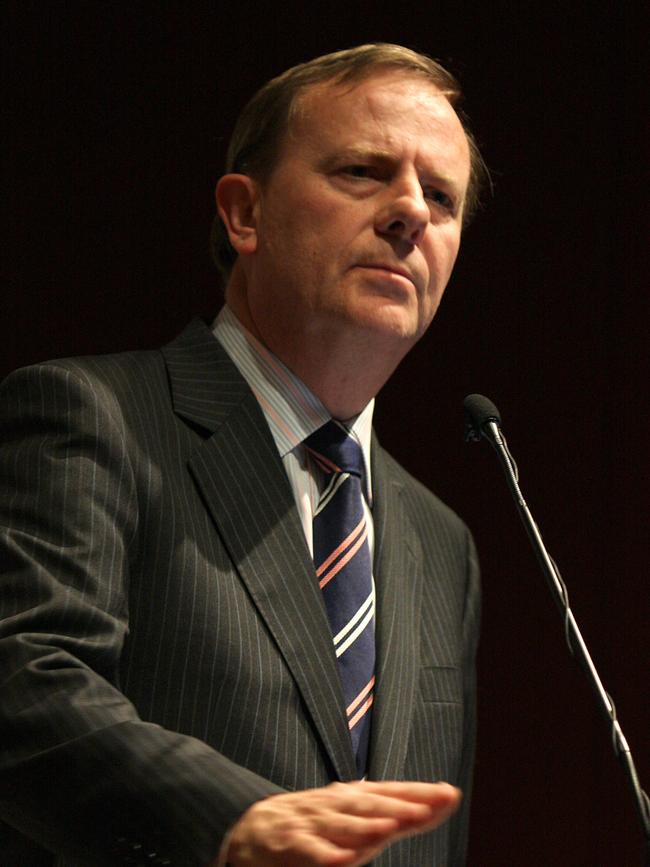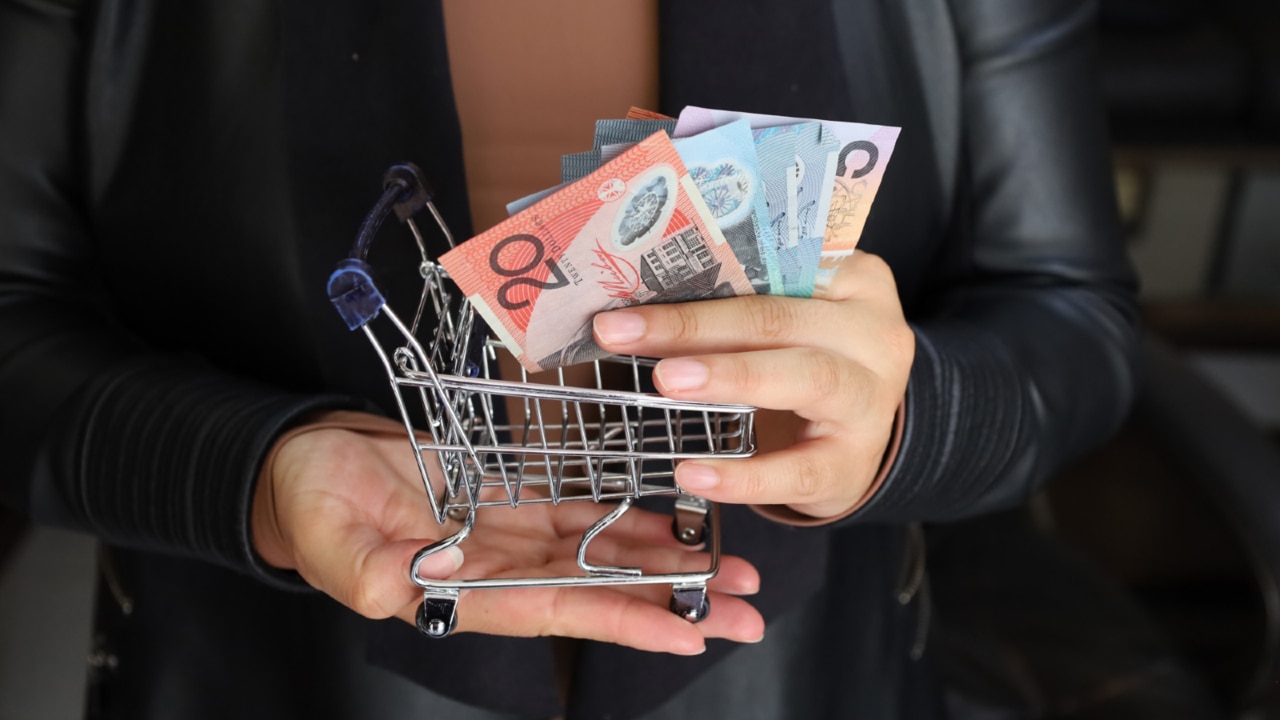
I came across a very old magazine from the mid-1990s containing an article on Global Leaders for Tomorrow. Along with several international figures was our then newly installed treasurer, Peter Costello, who had recently handed down his first budget.
His aim, he declared, was to confront the problem of Australia living beyond its means; his target was to deliver a budget surplus by 1998-99, something that he in fact achieved. He also outlined one of his most important tasks as “overhauling Australia’s outdated tax system”. The reason this article grabbed my attention was the contrast between then and now. Can you imagine the current Treasurer declaring his main task is to ensure Australia doesn’t live beyond its means?
Jim Chalmers clearly regards such talk as passe; he would rather spend taxpayer money on reinventing capitalism. After all, he didn’t show the slightest embarrassment when he delivered his most recent budget, which forecast four substantial deficits in a row.There was no discussion of living within our means in his speech. The best he could do in the Curtin Oration he delivered on Monday night was to claim that Labor has “made future deficits much smaller”.
It’s worth bearing in mind that famous quote of Milton Friedman: “Keep your eye on one thing and one thing only: how much government is spending, because that’s the true tax … If you’re not paying for it in the form of explicit taxes, you’re paying for it indirectly in the form of inflation or in the form of borrowing.”

The figures tell us all we need to know. Notwithstanding his claim to have got the budgetary settings completely right since coming to office, Chalmers has overseen a spendathon of massive proportions. This has doubtless contributed to the persistence of inflation, along with state government overspending.
From government payments as a percentage of GDP in 2022-23 of 24.5 per cent, this financial year the figure will be 26.4 per cent. Real government spending has risen from $627bn in 2022-23 to $727bn in 2024-25, an increase of $100bn, or 16 per cent. In 2027-28, spending is expected to top $826bn. And let’s not forget these spending numbers do not include the billions in off-budget spending: think here the Housing Australia Future Fund, the National Reconstruction Fund, Rewiring the Nation and the recapitalisation of the Snowy Hydro.
(One of the thankless tasks undertaken by Costello when he was Treasurer was to shut down most of the off-budget funding arrangements that existed at the time and to bring them directly onto the budget. He was of the view – and quite rightly – that this sort of fancy accounting had no place in sound budget practice.)
The obvious corollary of this ramped-up spending by Labor is that government debt is about to explode. Last financial year, net government debt came in at close to $500bn, or 18.6 per cent of GDP. At the end of the forward estimates period in 2027-28, government debt is projected to be close to $700bn – a massive increase of $200bn. By 2027-28, it is expected that government debt will have reached 21.9 per cent of GDP, with no signs this forward march will stop at that point.
Seemingly, there is no cause the Labor government regards as undeserving of more government funding. More spending on education, more spending on health, more spending on housing, more spending on the NDIS, more spending on aged care, more spending on childcare, more spending on climate initiatives – the list goes on.
But it’s important to recall another important proposition by Friedman – that the benefits of government spending are concentrated while the costs are dispersed. This sets up a vicious political cycle in which the beneficiaries always oppose any cuts while those bearing the costs live in relative ignorance of what is going on.

Costello was also conscious of the importance of refusing to start new spending programs without very careful consideration. He was wont to say that the best spending cuts he ever made were on programs he never implemented. It wasn’t as if proposals for the NDIS or Gonski school funding were not around in his day; it was just that he refused to sign the federal government up, knowing that these areas are really the responsibility of the states.
Labor’s complete disregard for living within our means is sadly mirrored in many developed economies. A standout example is the US. The federal deficit there is completely out of control. Last year, it came in at $US1.77 trillion, or 6.3 per cent of GDP. This compares with a deficit of 4.6 per cent of GDP in 2019 prior to the massive pandemic related spending.
Neither presidents Donald Trump nor Joe Biden paid any real attention to reining in the budget deficit. Unfunded tax cuts, untouchable entitlement programs and the cost of pensions and Medicare are the main contributors to recent budget outcomes. US government debt is now more than 120 per cent of GDP, compared with around 50 per cent in the late 1980s. Ambrose Evans-Pritchard of the (UK) Telegraph has noted that the interest costs of the combined federal and state government debts in the US will reach over 10 per cent of total government expenditures in 2025 – “anything above 10 per cent is a red alert”. Other significant countries to run chronic budget deficits include France, Spain, Belgium, Italy and the UK. Clearly, the message of living within your means has completely escaped the attention of the political leaders of those countries.
The point will often be made that Australia’s government debt problem is small beer compared with the US and other countries. Mind you, we need to add in the states’ debts that have ballooned since the pandemic – in some cases, a few years before the pandemic. It is estimated there is currently around $600bn of debt held by state governments, with an expectation this will rise to nearly $800bn by 2027.

Combining federal and state government debt we end up with more than 40 per cent of GDP. For a small open economy with China as its largest trading partner by a country mile, it’s not an entirely comfortable position to be in, particularly as some states – particularly Victoria – are likely to face credit ratings downgrades in the near future, meaning higher interest costs to service the debts.
There are also early signs some key commodity prices are on the wane; high commodity prices have propped up the federal and Western Australian budgets, in particular. Even prior to the pandemic, the menace of debt and deficits had been downplayed by most politicians and the voting public seemed to go along with this new insouciance. The excessive Covid-related spending reinforced the (incorrect) notion that money grows on trees. Unfortunately, there has been no sensible reset in terms of fiscal thinking since.
The temptation for politicians to use other people’s money to buy votes is always strong. Add in the emergence of identity politics, in which some groups are defined as permanent victims, and this force can become overpowering.






